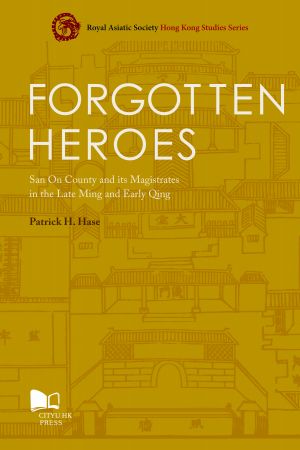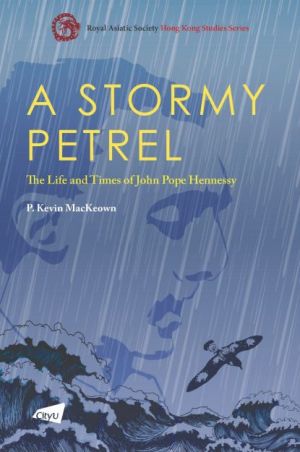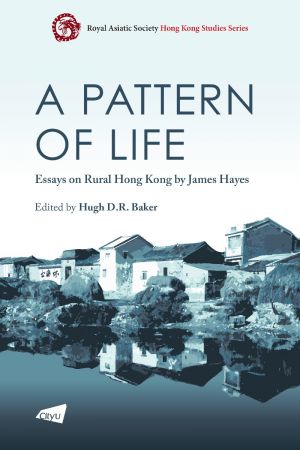Settlement, Life, and Politics—Understanding the Traditional New Territories
HKD278.00
In stock
“Without a clear idea of the history of the New Territories, the history of Hong Kong as a whole would be impossible to bring to any sort of satisfactory completion. ... Elucidating the development of a village, a clan, a temple, or a market-town is also, in and of itself, real and valuable history, and abundantly justifies the time and effort spent on it.”
This book is a history of village communities in the New Territories of Hong Kong, including those in the areas of Ha Tsuen, Hung Shui Kiu, and Sha Tin as well as those on the islands of Lamma, Ma Wan, and Tung Ping Chau. Elaborating on primary interviews with village elders, government documents, and public information, this book places the individual histories of each area into the context of Hong Kong’s rich past. The introduction sets up the rest of the book, outlining common themes and highlighting the dangers of using the communal memories of village communities while, at the same time, showing the valuable information doing so can bring. Each chapter provides a more detailed account of one specific area, concentrating on the settlement history, the lifestyle, and the politics of that area.
This book is a history of village communities in the New Territories of Hong Kong, including those in the areas of Ha Tsuen, Hung Shui Kiu, and Sha Tin as well as those on the islands of Lamma, Ma Wan, and Tung Ping Chau. Elaborating on primary interviews with village elders, government documents, and public information, this book places the individual histories of each area into the context of Hong Kong’s rich past. The introduction sets up the rest of the book, outlining common themes and highlighting the dangers of using the communal memories of village communities while, at the same time, showing the valuable information doing so can bring. Each chapter provides a more detailed account of one specific area, concentrating on the settlement history, the lifestyle, and the politics of that area.
ISBN
978-962-937-441-9
Pub. Date
Nov 1, 2020
Weight
1.2kg
Paperback
748 pages
Dimension
152 x
229 mm
I have been studying New Territories villages and the life and history of the villagers for over forty-five years, and in that time, I have been endlessly fascinated by the complexity and colour of traditional life in the area and the perpetual intricacy of local inter-village politics. This book stems from that fascination. The papers included were initially prepared between 1997 and 2012 as background papers for organisations proposing to develop certain areas of the New Territories or else as general background information papers for those organisations, with the exception of the paper on the history of Lamma Island, the earlier version of which was first published in 蕭國健,游子安 (ed), 鑪峰古今;香港歷史文化論集, 珠海學院香港歷史文化研究中心 [Lo Fung Kwu Kam: Hong Kong History and Culture: Chuhai College, Centre for the Study of Hong Kong History and Culture], 2016. All the papers have been re-worked for this volume.
The place-names for all of the Hong Kong locations referred to in this volume are given as they appear in A Gazetteer of Place Names in Hong Kong, Kowloon, and the New Territories, Hong Kong Government, 1960. Place-names of locations within China are given in Pinyin or, for places within Guangdong Province, in standard Cantonese Romanisation, with Pinyin on first appearance. In each case, the Chinese characters for the place-names can be found in the index. Chinese personal names of New Territories clan members and other Cantonese-speaking persons are given in standard Cantonese transliteration, while others are given in Pinyin. The Chinese characters for each name can be found in the index. Chinese expressions are given in standard Cantonese Romanisation where necessary. The glossary at the end of this volume provides a list of all the Chinese expressions used or alluded to in the text, while indexes are included for all persons and locations, as well as for general topics discussed.
A second volume of papers is in preparation.
I would like to thank the village elders who gave so much of their time to answer questions, and for their forbearance during the interviews even when, as often happened, they clearly thought the answers ought to have been self-evident. These papers could not have been produced without their help. This book is their history: it is a history of immense complexity and interest as well as unending fascination. As this list of people numbers over a hundred, I will not name them here, but I am extremely grateful for their help.
Thanks are also due to Professor James Watson, for urging me to prepare this book. Mr Tim Ko Tim-keung gave invaluable help with the Plates. Other assistance with the Plates is acknowledged in the appropriate footnotes and captions. Thanks are also due to Dr Louis Ng, of the Leisure and Cultural Services Department, for giving approval for the re-working and publication of the papers originally prepared for the department and to Professor Ivan Ho, Mrs Rosa Ho, and Mr Tony Miller for securing similar approval from KCL, FiSEK, the Housing Department, and Sun Hung Kei Real Estate Agents. Professor Anthony Siu also gave approval for the re-working and re-publication of the Lamma paper.
Patrick H. Hase
September 2020
The place-names for all of the Hong Kong locations referred to in this volume are given as they appear in A Gazetteer of Place Names in Hong Kong, Kowloon, and the New Territories, Hong Kong Government, 1960. Place-names of locations within China are given in Pinyin or, for places within Guangdong Province, in standard Cantonese Romanisation, with Pinyin on first appearance. In each case, the Chinese characters for the place-names can be found in the index. Chinese personal names of New Territories clan members and other Cantonese-speaking persons are given in standard Cantonese transliteration, while others are given in Pinyin. The Chinese characters for each name can be found in the index. Chinese expressions are given in standard Cantonese Romanisation where necessary. The glossary at the end of this volume provides a list of all the Chinese expressions used or alluded to in the text, while indexes are included for all persons and locations, as well as for general topics discussed.
A second volume of papers is in preparation.
I would like to thank the village elders who gave so much of their time to answer questions, and for their forbearance during the interviews even when, as often happened, they clearly thought the answers ought to have been self-evident. These papers could not have been produced without their help. This book is their history: it is a history of immense complexity and interest as well as unending fascination. As this list of people numbers over a hundred, I will not name them here, but I am extremely grateful for their help.
Thanks are also due to Professor James Watson, for urging me to prepare this book. Mr Tim Ko Tim-keung gave invaluable help with the Plates. Other assistance with the Plates is acknowledged in the appropriate footnotes and captions. Thanks are also due to Dr Louis Ng, of the Leisure and Cultural Services Department, for giving approval for the re-working and publication of the papers originally prepared for the department and to Professor Ivan Ho, Mrs Rosa Ho, and Mr Tony Miller for securing similar approval from KCL, FiSEK, the Housing Department, and Sun Hung Kei Real Estate Agents. Professor Anthony Siu also gave approval for the re-working and re-publication of the Lamma paper.
Patrick H. Hase
September 2020
Introduction
1. The Tangs of Ha Tsuen and their History
2. Beside Blood-stained Water: The History of the Hung Shui Kiu Area
3. The Nine Alliances of Lek Yuen: Traditional Sha Tin
4. A Small Island in the Midst of the Sea: The History of Lamma Island
5. By Violent Waters: The History of Ma Wan
6. Tung Ping Chau: Settlement and Society
Conclusion







